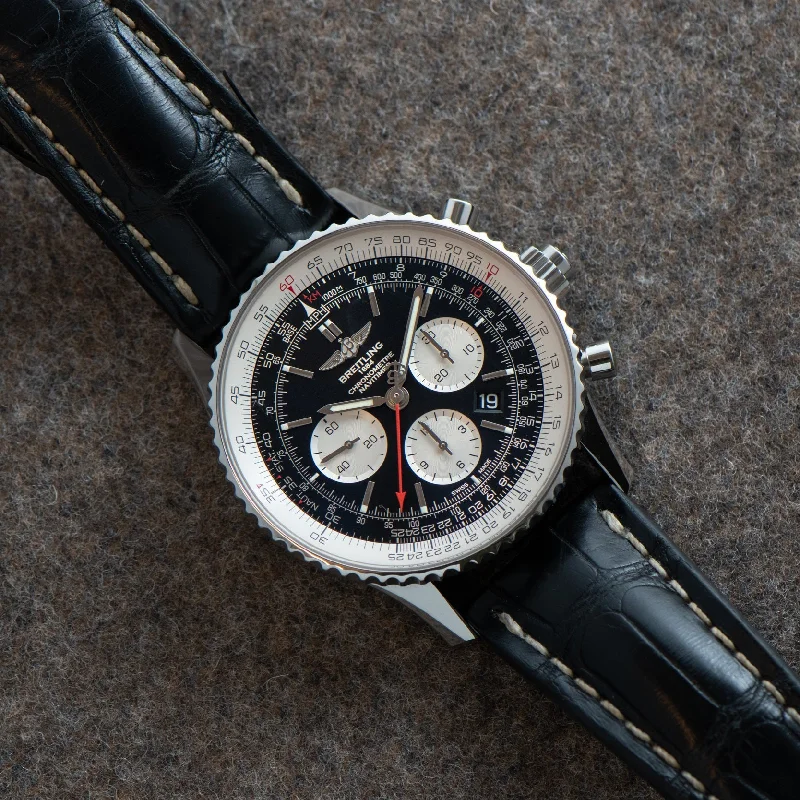How many watches can you spot from a mile away?
How many watches have come to define their genre? Not too many. Not too many at all.
Before the early 1950s, the concept of a civilian tool watch was a novel idea. Watch companies produced a few purpose-designed pieces for military use in the early 20th century, but most watches that were sold at retailers were designed with purely fashion in mind. In the 1950s and 1960s, the tool watch market exploded, fueled by the popularity of SCUBA diving and the growing interest in aviation. Breitling was one of the earliest manufactures to respond to the trend when they released the Navitimer in 1954.
We’ve been referring to the Navitimer as a watch, but that’s not quite right — it’s really a wrist-worn navigation computer. The Navitimer’s most distinctive feature, the slide rule bezel, was used by pilots to calculate airspeed, ascent and descent rates, flight time, distance traveled, fuel consumption and even imperial to metric unit conversions. The Navitimer truly is a mechanical computer, and also happens to be one of the best damn looking watches out there. How cool is that?
This particular Navitimer makes use of an always cool, split-seconds complication, or 'Rattrapante.' Coming in at 44.6mm in diameter with a sapphire crystal, a signed pusher-crown, barrel pushers, and a bidirectional rotating telemetry and slide rule bezel, it features a luminous satin black dial with applied indices, silvered 'radial' sub-registers, a matching handset with a red chronograph hand, and Breitling's Calibre B03 automatic winding movement with a 70hr power reserve.
Fitted to a signed black alligator strap with white contrast stitching and a signed steel deployant clasp, this is a tremendous opportunity to own a solid, contemporary iteration of a classic model from one of the most storied brands in the segment.
Don’t miss it!

